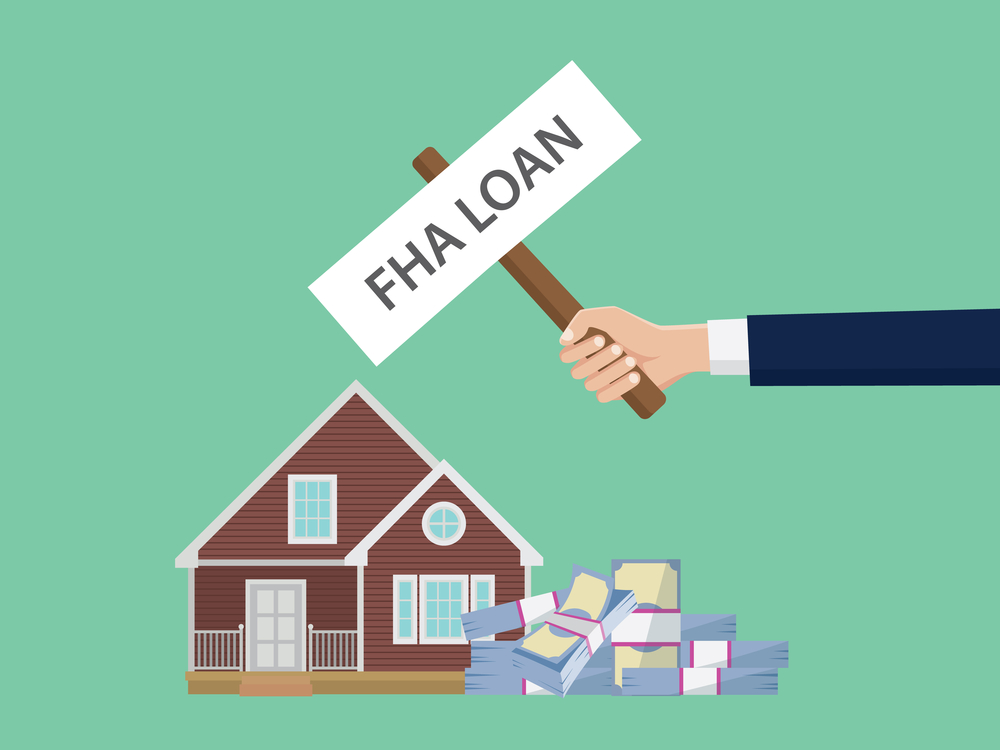A Comprehensive Guide to Evaluating & Comparing School Districts
Clothing store jingles, parents and children stocking up on classroom supplies, traffic behind the yellow bus. These telltale signs can only mean one thing: back-to-school season is upon us once again.
Moving to a new location can be an exciting yet daunting task — especially when you have children and their education to consider.
Surprisingly, many first-time homebuyers don’t realize that the quality of a school district and the efficiency with which it utilizes its resources affects homeowners of all ages and situations, regardless of their family composition.
As a new school year approaches, there’s no better time for first-time homebuyers to explore resources that can help evaluate and compare school districts.
In this post, we examine why first-time homebuyers should consider school district quality before making a home-buying decision, share resources available to aid in decision-making, and dive further into the factors to keep in mind as you narrow down options on the journey to homeownership.
Why school district quality matters for first-time homebuyers

When school districts boast a superior reputation, it is no surprise they draw in families who seek a quality education for their children. Prudent first-time homebuyers also know that a school district with a long track of excellence will lead to an increase in their home value over time.
Parents of school age children are typically in the middle of their productive working years and towards the beginning of paying off their mortgages, which increases the local tax revenue appropriated to school districts. With more resources available to a school district, it can hire better teachers and open more supplemental programs, thus creating a cycle of increasing desirability, competition, and in turn, property values.
The most important factor to consider
In many ways, consideration of the local school district is one of the most important factors to consider when making what is often the largest one-time financial investment a person or family makes, the purchase of a home. Long after you buy a home and your children have grown up, a smart homeowner will monitor the health of their local school district because they know how critical it is to the quality of the surrounding neighborhood and their home’s value.
It is important to balance factors discussed in this post with the tax rate of your potential home or neighborhood. While you can pay mortgage payments down over time and restructure your loans, local school district taxes are likely to rise over time. Research the annual history of school tax rate in the school district to get a sense of how much you can expect it to change each year.
Financial implications aside, the quality of the school district plays a pivotal role in shaping children’s academic journey and overall development. This comprehensive guide aims to provide you with insights and strategies to effectively evaluate and compare school districts while making an informed decision for you or your family’s future.
The 3 R’s: School Rankings, Ratings, and Resources
When considering prospective school districts, begin your evaluation by researching local school rankings and ratings through publicly available resources. Websites like Niche.com use multiple factors and weightings to rank and rate schools such as SAT/ACT test scores, parent surveys, teacher salary, expenses per student, cultural diversity statistics, and availability of extracurricular clubs or sports.
Other resources such as the U.S. News & National Report use similar factors, but may weigh the factors differently.
For example, a district measures college readiness by the proportion of a school’s 12th graders who earn Advanced Placement credits or pass International Baccalaureate Exams. This score represents 30% of the overall rating for U.S. News & National Report, whereas Niche.com uses several million parent, student, and teacher surveys to aggregate data on various factors and then assigns varying weights to the factors.
Greatschools.org is an example of a non-profit website that uses a similar methodology to Niche.com, but values student progress as their top factor, and therefore assigns it the highest weight of all the contributing factors. The popular real estate website Zillow happens to pull its school rankings from Greatschools.com.
All of these resources can provide a first-time homebuyer with a starting point in their quest for a school district. But you may need to do a little more homework to complete a comprehensive search.
By understanding the factors that go into school ratings and rankings, first-time homebuyers can decide for themselves the most valuable features of a school district, depending on their individual scenarios.
Next, we outline the most commonly used factors for rating school districts in more detail by explaining how to measure them, why they are important, and limitations for first-time homebuyers to consider.
Factors to consider when evaluating a school district
Ratings and rankings of school districts usually include several, if not all, of the factors below. However, no single media resource is likely to lead to the perfect match for a first-time homebuyer’s situation. To complete a comprehensive search, homebuyers should consider all of these factors and decide what is most important depending on their unique situation.
1. Student performance

Far and away the number one factor used to rate schools is some measure of student performance, which can also take into account student progress and/or achievement, depending on the methodology. While folks often criticize standardized tests for their flaws, they are the most statistically sound measure available to compare student performance.
Nationwide standardized tests such as the SATs and ACTs provide a measure of student achievement that administrators can use to compare performance within schools, across districts/regions, and even between states.
Student performance is also measured using state testing data, often required for state diplomas. In many states, students demonstrate their mastery of curriculum through their performance on state tests, and teachers are graded on the performance of their students.
Another widely considered measure of student performance is local graduation rates. These statistics are accessible through the U.S. Department of Education’s website, as well as individual state education department websites.
Although student performance is in some ways a catch-all for all other factors that lead to the outcomes on these tests, several other factors must be considered when evaluating and comparing school districts.
2. College and career readiness
When evaluating how a school district prepares students for life after school, the term college readiness often applies.
College readiness is typically measured by analyzing the number of college level/advanced placement courses available to students, participation rates within these courses, and outcomes on advanced placement tests. Local districts often highlight where their graduates will be attending college in May or June as high school seniors prepare to graduate.
A related factor to consider is career readiness. Recent initiatives, such as the Strengthening Career and Technical Education for the 21st Century Act of 2018 (Perkins V) have focused on closing the gap between what is learned in the academic classroom and how that is applied to solving real-word problems.
Career and Technical Education (CTE) Programs provide high school students with vocational training in high-demand fields such as construction, automotive technology, information technology, healthcare, and cybersecurity. Oftentimes, students can leave high school with certifications and step right into their desired field. Science, Technology, Engineering, and Math (STEM) curriculums can prepare students from a young age to focus on problem-solving.
Beyond career readiness programs such as CTE, districts may offer apprenticeship programs, work-based learning opportunities, and other partnerships with local businesses. Many districts highlight young alumni on their school websites and profile the work they are doing years after graduation.
3. Teacher and leadership quality
Teacher quality is a complex and multifaceted concept that can be both controversial and challenging to measure accurately. You can use various methods and criteria to assess teacher quality, often taking into consideration both quantitative and qualitative factors. With this in mind, let’s take a look at some common ways to measure teacher quality.
One of the most direct ways to measure teacher quality is through classroom observations. Experienced mentors or administrators observe teachers in action to assess their instructional practices, classroom management, engagement with students, and ability to create an effective learning environment.

A potential limitation of this method, however, is its inherent subjectiveness despite the efforts of educational researchers to employ rubrics and other measurement tools.
Student performance
A more objective measure that is considered when measuring teacher quality, as previously discussed from a different perspective, is student performance on standardized tests and other assessments. Value-added models attempt to measure a teacher’s impact on student learning by comparing their students’ actual performance to expected performance based on various factors.
Qualifications such as degrees, certifications, and years of experience are sometimes used or factored into indicators of teacher quality. While they can be relevant and say something about the consistency of a school, they don’t always provide a complete picture of a teacher’s effectiveness in the classroom.
Professional development
The extent to which teachers engage in ongoing professional development and stay current with educational research and practices is often considered a sign of teacher quality. Most states and districts mandate some level of professional development engagement for teachers, typically with increased intensity in the beginning stages of a teachers’ career. Professional development plans are available on district websites and are often incorporated into publicly available district policies and teacher contracts.
Surveys can be used to measure teacher quality, although they have the potential to run into the problem of subjectivity and bias depending on how questions are structured and who is completing the surveys. Surveys from students attempt to measure a teacher’s ability to engage, motivate, and support students. Peer surveys or assessments aim to provide insights into a teacher’s collaboration, teamwork, and contributions to the school community. Additionally, self-assessments can offer teachers the opportunity to reflect on their own practices and areas for improvement but are often not readily available to potential home-buyers.
The parents’ views
The views of parents, guardians, and other stakeholders within the school community can also contribute to the assessment of teacher quality. School board meetings are open to the public and first-time homebuyers can learn a lot about a school district’s culture by attending and participating in these meetings.
Tangential to teacher quality is the quality of strong building and district leadership. Some districts require prospective school administrators to hold doctorate degrees or advanced certifications and training. A potential homebuyer may want to inquire and explore the turnover rate for a district’s leadership team and compare it to other local districts.
It’s important to note that no single measurement method can fully capture teacher or leadership quality. Often, graders use a combination of these methods to provide a more comprehensive assessment. Moreover, the context in which teachers work, the student population they serve, and the goals of the educational institution all play a role in determining how to evaluate teacher quality.
4. Facilities and resources
School taxes go largely towards a school’s budget and community members have the right to expect that the district uses funding to maintain facilities and keep up with technology within schools. Adequate and well-maintained facilities create a safe and conducive learning environment for students. This is why facilities and resources are part of school district ratings.
First-time homebuyers should explore a district’s facilities through its website and consider asking for a tour to personally assess the cleanliness and comfort within a school building by looking for signs of well-lit and ventilated learning spaces and asking about cleaning and hygiene practices.
Well-equipped science labs, art studios, music rooms, and other specialized spaces can enhance hands-on learning experiences in various subjects for students. Other than noting capital expenditures for these rooms in budgets, they can be difficult for a homebuyer to assess without seeing in person.
When exploring the facilities, it is also important to keep technology in mind, as it is an inseparable component of modern education. Inquire about technology initiatives at potential schools and the level of access that students have to equipment beyond traditional textbooks and class materials.
Schools with appropriate facilities and resources are better able to provide inclusive education for students with special needs. Accessible facilities and tools can promote a more inclusive learning environment. Plus, the law mandates them via the Americans with Disabilities Act. Students with special needs as well as other students may benefit from open counseling spaces or therapist rooms that contain sensory equipment and other supplemental learning resources to help students with disabilities access the curriculum.
Class size
Class size and student-to-teacher ratios are directly related to physical facilities and the resources available to a district. Research suggests that smaller class size leads to positive short-term and long-term student outcomes because students receive additional individualized attention from their teachers. This can be especially important for students with special needs.
When considering facilities and resources, it is important to evaluate the long-term prospects of the school district. Research the district’s history of fiscal health and any plans for future capital improvements. A forward-thinking district is more likely to adapt to changing educational needs.
Overall, quality facilities and resources are essential for creating an environment where both students and teachers can thrive. Adequate funding, strategic planning, and community involvement are key factors to consider when evaluating whether schools have the resources they need to provide a high-quality education.
4. Equity and Cultural Diversity Factors
Schools that prioritize equity provide targeted support to students who may face challenges due to socioeconomic status, language barriers, or disabilities, leading to improved academic outcomes. Inclusion can benefit all students by fostering empathy, communication, acceptance and a sense of community across diverse backgrounds. This improves the school climate for all stakeholders.
Cultural diversity can enrich the learning environment by exposing students to different perspectives, cultures, and ways of thinking. This can lead to increased critical thinking skills and a broader worldview. When agencies rate and rank districts, they measure these factors through a combination of census data and the achievement levels of students from different groups.
Measuring equity requires comprehensive data collection, analysis, and a commitment to making necessary changes to ensure that all students have equal access to a high-quality education. It’s important to use multiple measures and involve culturally diverse stakeholders of students, parents, teachers, and community members in the assessment process.
First-time homebuyers can explore equity initiatives in more depth by carefully analyzing a district’s curriculum and looking for engagement among diverse stakeholders to build trust in the community. When looking at historical data, a potential homebuyer may want to analyze subgroup achievement scores and would ideally see the gap closing. Similarly, one may want to analyze the achievement gap between subgroups when comparing between districts.
You can’t ignore diversity, equity, and inclusion
Equity and cultural diversity can have a profound impact on school districts and play into all of the factors previously discussed. For this reason, first-time homebuyers cannot ignore these crucial factors that folks commonly consider as part of overall school district ratings.
Administrators measure equity in schools through a combination of qualitative and quantitative methods that assess the distribution of resources, opportunities, and outcomes among various student groups. It involves evaluating whether all students, regardless of their background, have access to the same quality of education and opportunities for success.
When measuring equity through the lens of student performance and college/career readiness, school district raters examine standardized test scores, graduation rates, participation in advanced courses, and college enrollment across different racial, ethnic, and socioeconomic subgroups to measure for disparities.
States require districts to measure and report if students with disabilities and students who participate in gifted or talented programs are over or under-represented by subgroups. There are also mandated requirements for students who need additional support to learn and acquire the English language.
Measuring equity and diversity
School leaders need to take equity and diversity into account on several fronts. Disciplinary actions such as suspensions are analyzed across different subgroups for disparities. Leaders work with teachers to gather and assess the level to which students from diverse backgrounds feel safe, respected, and included. School leaders who are charged with developing curriculum examine the material to ensure it reflects the experiences of different subgroups.
School ratings also measure the level of diversity amongst teaching staff and school leadership and analyze hiring processes to check for inequities.
As equity relates facilities and resources, raters analyze how funding, technology, and materials are distributed across schools and classrooms, because students in under-resourced schools may not have the same opportunities as those in more well-funded schools. A first-time homebuyer may want to explore if a district has a family resource center that conducts outreach to parents and community members of different backgrounds.
5. Other factors to consider
While student performance, college/career readiness, teacher/leadership quality, facilities/resources, and measures of equity/diversity tend to make up the bulk of school district ratings and rankings, there are several other, sometimes more difficult to measure, factors first-time homebuyers should consider.
Parent and community involvement contributes to community success, and in turn, a school district’s reputation. First-time homebuyers may want to analyze voter turnout for school board meetings and budget votes and compare with other districts. Another indicator for parent and community involvement could be a robust PTA membership.
Safety is a top priority in modern American schools due to tragic incidents of violence that have played out over the past quarter-century. Analysis of safety and security data can give a first-time homebuyer an idea of a school-district’s safety. Indicators to look for are the number of security guards per school, whether schools partner with local police departments and utilize school resource officers, and whether the school has a safety plan in the event of an emergency. Raters can also check for safety violations and citations issued by local and state authorities, as school districts are subject to state audits. Another indicator related to safety is the presence of an anti-bullying program to reduce violence with a preventative approach.
Transportation and after-school programs
A practical aspect to consider for first-time homebuyers who will have children going through the school district is whether the district provides transportation or offers after-school programs and how this would affect a homeowner’s own work availability and/or daycare needs. Daycare can have a significant effect on a homeowner’s budget.

If a first-time homebuyer has a child who receives special education services, it will be important to contact the district’s special education director or special education chairperson to discuss potential options to ensure the district can meet the student’s needs in the least restrictive environment possible. School districts are generally required to match a student’s special education plan from their previous school district and are also required to identify students with disabilities through the child-find process. Special education programs can vary widely from district to district so this may be an important consideration depending on individual needs.
Finally, a first-time home buyer may want to consider simply reaching out to current parents and community members within prospective school districts to gain anecdotal insights into their experiences. Their perspectives can offer valuable information that might not be readily available through publicly available resources.
Buying a home for the first time? Don’t forget to evaluate local school districts
Choosing the right school district is a multifaceted decision that requires thorough research and evaluation. By considering the factors discussed in this article, you can make an informed choice that aligns with your family’s educational goals and values. .
While first-time homebuyers should carefully consider the quality of local schools before buying a house, that’s just one factor in the decision-making process. To learn more about other things to keep in mind as you narrow down your options, read this: 10 Important Considerations for Buying a House.
Tom Colgan is a certified School Psychologist and Special Education Chairperson working and living in the South Orangetown Central School District in Blauvelt, NY. He holds a Bachelor’s Degree in Psychology from the University of Vermont, a Masters Degree and Advanced Certificate in School Psychology from the State Univeristy of New York at Buffalo, and Certifications in School Building Leadership and School District Leadership from the State University of New York at New Paltz. He is father of three young children, educational researcher, homeowner, and involved community member.
Disclaimer:
The content provided on this website is offered for educational purposes only. While we endeavor to provide accurate and up-to-date information, we make no representations or warranties of any kind, express or implied, about the completeness, accuracy, reliability, suitability, or availability of the content for any purpose. Visitors are advised to consult with qualified experts before making any financial decisions or taking any actions based on the information provided on this website.
















